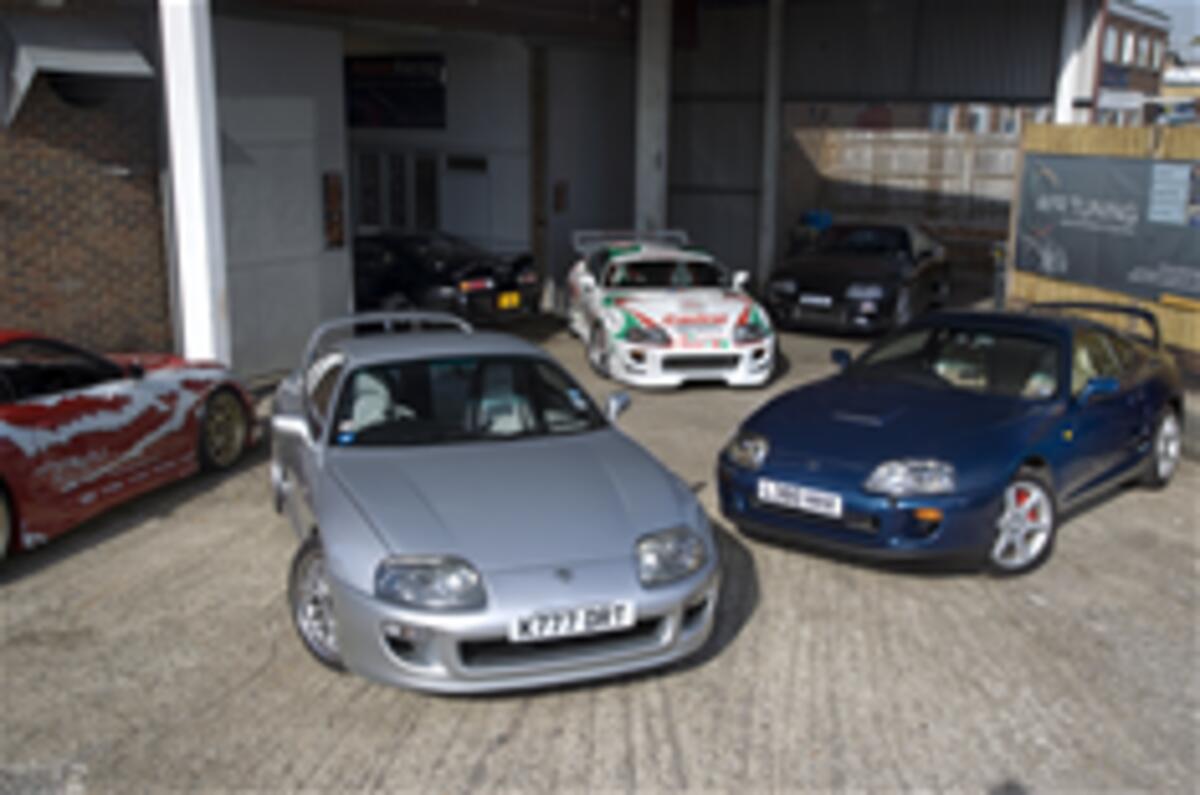With the launch of the Lexus LFA supercar and the forthcoming rear-drive “Toyobaru” FT-86 it seems Toyota is rediscovering its performance roots.
With this in mind Autocar has revisited its Porsche-baiting sports car of the nineties, the twin-turbo Supra, to bring you a buying guide.
In 1993 the Supra Turbo cost £40,000, which could also have bought you a brand new Lotus Esprit in the same year.
Unsurprisingly, it didn’t sell anywhere near as well as Toyota GB hoped. In the end buyers couldn’t get beyond the fact that it was a Toyota, not a Porsche, in light of which it didn’t seem to matter that there was 326bhp of twin-turbo power beneath the bonnet, or a rear-drive chassis that could run rings around even the most potent Porsche 928s of the same era.
Fewer than 500 examples were sold through the official dealerships as a result, the vast majority of which have since been either crashed, modified beyond recognition or exported. Yet despite its less-than-dramatic impact, the Supra Mk4 has become a more successful and desirable commodity on the used market.
Why? Because when Toyota first designed and engineered the car, it knew that to compete with the biggest, most established players, it would have to offer something extra, and that came in two forms. One: much more performance than anything else at the same money at the same time. Two: reliability.
It’s the second of these factors that’s most crucial to the Supra’s enduring appeal, because even today it’s regarded as a quite extraordinarily strong car mechanically. Even with 150,000 miles showing, not a lot regularly goes wrong, according to Supra specialists AFR Tuning near Gatwick.
What to look out for:
DifferentialMassively strong; the standard item can handle close to twice the normal power output without too many problems. Which is just as well, because a replacement will cost £450 from a specialist like AFR. Even when new, the diffs used to clonk sometimes, especially when selecting first gear from reverse. What you don’t want to hear is any whining under load.
GearboxIf you want really big power then you must have the six-speed manual ’box. The five-speed auto is okay up to 500bhp, but the manual — made bespoke for the car by Getrag — is heroically strong and can take up to 1000bhp without requiring any work whatsoever.
BodyworkThe quality of a Mk4’s bodywork will be largely down to the way each car has been treated. Generally it’s very good, but there are areas — such as at the base of the tailgate, just below the rear window — that are vulnerable to rust. If you do need to source new panels and/or bumpers front and rear, avoid the official dealer prices and instead go to a specialist.
EngineAs bulletproof as they get, especially the 3.0-litre twin-turbo units fitted to UK cars, because the internals of the turbos are more durable than those fitted to imported versions. Replacement turbos can be had for £550 a pop. Bottom end is good for over 500bhp; 1000bhp is possible.UK spec was 326bhp and 325lb ft; stage one upgrade from AFR costs £1000 and increases figures to 390bhp and 375lb ft. Stage two costs around £7k but unleashes 550-600bhp.
Steering/suspensionThe Supra is fundamentally strong in this area. Basic suspension parts are over-engineered, as are the driveshafts and the steering rack. What can make a fine example feel very baggy indeed is a set of worn dampers. Prices for new ones vary, and unless you want to do a lot of track days don’t go for so-called uprated versions that are stiffer than standard; all they do is ruin the ride. A new set of UK-spec dampers will cost anything from £300 to £600.




Join the debate
Add your comment
Re: Toyota Supra buyer's guide
Just been looking through the pictures and saw this caption: "Rear seats are only really for short journies".
Are 'short journies' a group of motoring journalists who are shorter than 5' 4"? Looking at the size of the seats, they would probably be better for short journeys too!
Great car though, but I always wondered why this car had over 320bhp when all the other Japanese cars at the time were supposed to stick to a 276bhp limit?
Re: Toyota Supra buyer's guide
What about the mk3? Always overlooked and one of the best performance bargains out there. I bought a 3.0 turbo with an MOT for £300 last year - madness!
Re: Toyota Supra buyer's guide
The auto only has 4 gears, not 5.